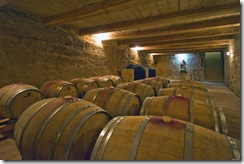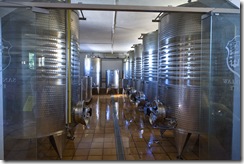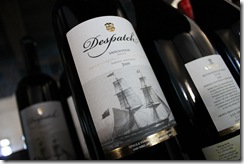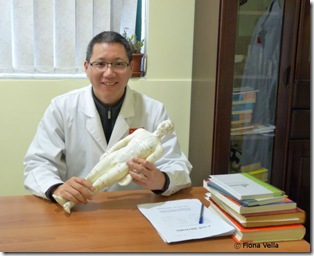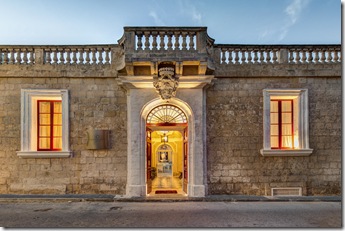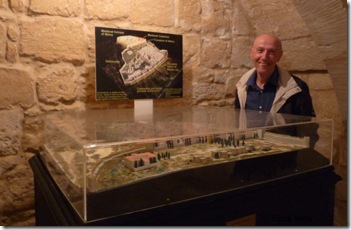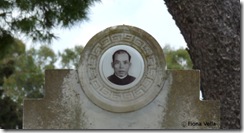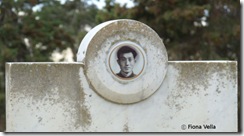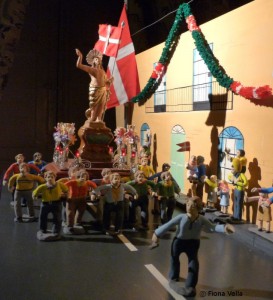Archive for April, 2014
-
PONT MAĊ-ĊINA – IS-SITT PARTI – Fuq vjaġġ virtwali
Dan huwa l-aħħar artiklu ta’ din is-sensiela li kellha l-għan prinċipali li ddewwaqkhom ftit mill-faxxinu taċ-Ċina u tal-kultura ta’ niesha. Permezz ta’ dawn l-artikli, erħejtilha flimkien magħkom fuq vjaġġ sinifikattiv ta’ riċerka li laqqgħani ma’ numru ta’ perspettivi interessanti, mal-filosofija ta’ wħud mill-aqwa għorrief, u ma’ użanzi, tradizzjonijiet, rakkonti u leġġendi li qatt ma kont smajt bihom qabel. Personalment nemmen li din l-esperjenza għenet biex bnejt pont maċ-Ċina li serva biex wessgħali aktar il-firxa ta’ ħsibijieti u tal-mod ta’ kif nevalwa ċerti aspetti. Nittama li anki intom il-qarrejja gawdejtu xi ħaġa mill-informazzjoni li qsamt magħkom. Għażilt li nagħlaq din is-sensiela billi nżur virtwalment xi wħud mis-siti Ċiniżi li nittama li xi darba għad nara tassew u li forsi anki intom titħajjru tagħmlu l-istess…
Is-sit arkeoloġiku ta’ Zhoukoudian
Zhoukoudian huwa villaġġ żgħir li jinsab madwar 50km fuq lbiċ ta’ Beijing. Dan il-post huwa mfittex ħafna mill-ġeologi minħabba s-saffi sedimentarji antiki mmens li fih. Infatti kien saff antik tal-perjodu Ordovician li biddel id-destin ta’ dan il-post, hekk kif ġewwa dan il-ġebel, bdew ifeġġu diversi fossili umani li d-dinja qatt ma kienet rat bħalhom qabel.
Kien fl-1918 meta l-ġeoloġist u arkeoloġist, Johann Gunnar Andersson, ġie mgħarraf dwar xi fossili li kien hemm f’għolja msemmija Chicken-bone qrib l-inħawi ta’ Zhoukoudian. Huwa wettaq xi studju f’dan il-post u ġabar għadd kbir ta’ fossili tal-annimali. Iżda r-rota dwar din il-ġrajja bdiet iddur meta fl-1921, huwa rritorna flimkien mal-palaeontologu Otto Zdansky, sabiex jerġa’ jsir tiftix ieħor f’dawn l-inħawi u fost il-fdalijiet tal-annimali, nstabu wkoll żewġ sinniet umani. Din l-iskopertà qanqlet ħafna interess fl-arena xjentifika peress li sa dak iż-żmien, qatt ma kienu nstabu fdalijiet umani f’saffi daqstant antiki, la fiċ-Ċina u anqas fl-ebda pajjiż ieħor fil-kontinent tal-Asja.
Dawn is-sejbiet wasslu għall-finanzjarjament ta’ aktar riċerka u ta’ aktar tħaffir fuq dan is-sit arkeoloġiku, fejn fost il-fdalijiet umani li nstabu, l-aktar waħda sinifikattiva saret fl-1929 mill-ġeologu u arkeologu, Pei Wenzhong. Din is-sejba kienet tikkonsisti fil-fdalijiet ta’ ras umana ta’ individwu li għex f’dawk il-partijiet taċ-Ċina madwar 200,000 – 700,000 sena ilu, liema tip ta’ umani kienu saru magħrufa bħala Peking Man. Din l-iskopertà ġabet magħha informazzjoni ġdida hekk kif din tefgħet aktar dawl fuq l-oriġini tal-bniedem u ta’ l-evoluzzjoni li għadda minnha. Infatti minn oġġetti oħra li nstabu, fosthom ta’ labbra tal-ħjata magħmula minn għadma rqiqa u ta’ ġiżirana maħduma mill-ġebel, mis-snien tal-annimali u mill-għadam, kien hemm indikazzjoni illi dawn l-umani kienu diġà bdew jiżviluppaw il-kunċett ta’ kultura u li kienu kreattivi. Huma kienu wkoll kapaċi jikkontrollaw in-nar u jikkaċċjaw l-annimali kbar.
Minħabba l-importanza kbira tiegħu, fl-1987, dan is-sit li maż-żmien infetaħ ukoll għall-pubbliku, sar jifforma parti mill-Wirt Kulturali Dinji.
It-Triq tal-Ħarir u l-Grotti tal-Buddha
It-Triq tal-Ħarir tirreferi għal rotta ta’ trasport li fiż-żminijiet antiki, kienet tgħaqqad liċ-Ċina maċ-Ċentru u mal-Punent tal-Asja, mal-Afrika, u mal-kontinent tal-Ewropa. Dan il-passaġġ beda jinħoloq madwar it-2 seklu u dawk li l-aktar li kienu jużawh kienu negozjanti tal-ħarir.
Madanakollu biż-żmien, il-kuntatt bejn iċ-ċivilizazzjonijiet differenti beda jħalli l-influwenzi tiegħu anki f’oqsma oħra. Ngħidu aħna fil-qasam tat-teknoloġija u x-xjenza, iċ-Ċina ntroduċiet mal-bqija tad-dinja l-prodott tal-karta u tal-istampar, filwaqt li mbagħad hija assorbiet elementi oħra minn pajjiżi varji, fosthom fl-oqsma ta’ l-arti, tal-filosofija u tar-reliġjon fejn naraw l-introduzzjoni tal-Buddiżmu u ta’ l-Islam. Dan għen biex il-kulturi jaċċettaw aktar id-differenzi ta’ xulxin fi żmien id-dinastiji ta’ Han u Tang.
Intant, hekk kif il-Buddiżmu beda jinfirex matul it-Triq tal-Ħarir, ftit ftit bdew jinbnew għadd ta’ grotti u tempji kbar li bdew jiżżejnu bi statwi u murali ta’ ġmiel liema bħalu. Sfortunatament, ħafna minn dawn inqerdu mas-snin iżda dawk li rnexxielhom isalvaw huma xempju ta’ dak li kien hemm qabel.
Il-Grotti ta’ Mogao: Dawn jinsabu mibnija fuq l-irdumijiet tal-muntanja Minsha fl-inħawi tal-belt ta’ Dunhuang li dari kellha importanza strateġika fit-Triq tal-Ħarir. Għal elf sena sħaħ, matul ir-4 u l-14 il-seklu, għadd ta’ nies waslu f’dawn l-inħawi sabiex jibnu dawn il-grotti li maż-żmien issawwru f’teżori artistiċi u arkitettoniċi fejn bosta mix-xogħolijiet kienu jirrappreżentaw ix-xbieha ta’ Buddha. Fis-sena 1987, il-grotti ta’ Mogao bdew jiffurmaw parti mill-Wirt Kulturali Dinji.
Il-Grotti Longmen: Bi storja ta’ aktar minn 1,500 sena, dawn il-grotti li jinsabu f’Luoyang, huma magħrufa għal statwa ġganteska ta’ Buddha li hi twila 17 il-metru u li ħadet tliet snin biex tlestiet. Barra minn hekk, dan il-post huwa sinifikanti peress li fih wieħed jista’ josserva wkoll it-trasformazzjoni artistika fir-rappreżentazzjoni tal-Buddha, hekk kif din bdiet tinbidel minn xbieha ta’ patri Indjan f’sofferenza, għal immaġini ta’ patri aktar seren ta’ żmien id-dinastija Tang, u b’hekk tnissel stil ġdid b’dehra aktar Ċiniża. Fis-sena 2000, il-grotti Longmen bdew jiffurmaw parti mill-Wirt Kulturali Dinji.
Il-Ħajt il-Kbir taċ-Ċina (The Great Wall of China)
Dan il-ħajt dam jinbena 2,000 sena – mis-7 seklu Q.K. sas-16 il-seklu W.K. Taw sehemhom fih 19 il-dinastija sakemm dan wasal biex ilaħħaq il-100,000 kilometru. M’hemm ebda kostruzzjoni oħra madwar id-dinja li għandha dan il-kobor kollu jew li damet tinbena għal daqstant żmien. Daqshekk ieħor huwa diffiċli biex wieħed iqabbel ix-xogħol kbir li dan il-ħajt kien jinvolvi u s-sofferenza kollha li sewa lil tant nies hekk kif ħafna minnhom ġew imġiegħla jagħtu sehemhom fil-bini tiegħu.
Il-bidu tal-bini ta’ dan il-ħajt jiftakar żmien meta l-pajjiż kien maħkum minn gwerra wara l-oħra u din il-kostruzzjoni kellha l-għan li toffri protezzjoni mill-għadu. Infatti, permezz ta’ dan il-ħajt, il-bdiewa reġgħu ħadu r-ruħ hekk kif is-suldati li kienu qed jiġu min-naħa tat-tramuntana, sabu barriera kbira tilqagħhom. Sadanittant, dan il-ħajt wassal ukoll biex l-art tinqasam fi tnejn, fejn instab illi l-parti tan-nofsinhar kienet aktar sħuna u adattata għall-agrikoltura, filwaqt li l-naħa tat-tramuntana kienet aktar kiesħa u tixraq aktar għat-trobbija tal-merħliet tal-annimali. Din id-diviżjoni, apparti li temmet il-komunikazzjoni bejn iż-żewġ kulturi, min-naħa l-oħra tat ukoll skop lin-nies tat-tramuntana biex jieqfu jibbażaw l-ekonomija tagħhom fuq il-gwerer u minflok joħolqu xi ħaġa tagħhom. Maż-żmien iż-żewġ kulturi kibru u tgħallmu japprezzaw id-differenzi ta’ xulxin billi jerġgħu jiltaqgħu flimkien sabiex jinnegozjaw il-prodotti varji tagħhom.
Matul is-sekli, dan il-ħajt sar is-simbolu tal-għaqda u tas-saħħa tan-nies taċ-Ċina hekk kif huwa sar xhieda ta’ kif bi sforz u b’għan komuni, wieħed kapaċi jwettaq kollox. Fil-preżent, f’dan is-sit, li fis-sena 1987 sar parti mill-Wirt Kulturali Dinji, kuljum jinġabru eluf ta’ turisti sabiex igawdu l-kobor u l-ġmiel tiegħu.
Il-Belt Ipprojbita (The Forbidden City)
Minn din il-belt, 24 imperatur tad-dinastiji Ming u Qing ħakmu liċ-Ċina mis-seklu 15 sas-seklu 20. Fiha ġie mibni l-palazz imperjali li kien iservi kemm bħala r-residenza tal-imperatur u kif ukoll bħala sit ta’ ċerimonja u ċentru politiku, flimkien ma’ għadd ta’ binjiet oħra li kienu jiġu użati mill-familjari.
Il-bini tal-Belt Ipprojbita nbeda fis-seklu 15 mill-imperatur Yongle u biex din tlestiet kompletament fuq medda ta’ art ta’ 8 kilometri, ħadmu fuqha madwar miljun individwu għal diversi għexieren ta’ snin. Il-kuluri li ntużaw għat-tisbieħ ta’ din il-belt għadhom jimpressjonaw anki lill-viżitaturi ta’ llum. Is-selezzjoni tal-lewn isfar kien simbolu tal-poter imperjali fiċ-Ċina l-antika, filwaqt li l-kulur aħmar dejjem kien jirrappreżenta l-ferħ. Hemm madwar elf binja individwali ġewwa din il-belt u kważi s-soqfa tagħhom kollha ġew dekorati b’madum kulur id-deheb u b’ħitan aħmar. Jingħad li l-kumpless ta’ dan il-palazz huwa l-ifjen wieħed f’Beijing u li fost il-binjiet tat-tip tiegħu, huwa l-aktar wieħed preservat. L-arkitettura raffinata tiegħu u l-kollezzjonijiet kbar u varji li jinsabu fih huma evidenza ħajja tar-rikkezza storika ta’ dan il-pajjiż.
Fl-1912, l-aħħar imperatur li kien joqgħod ġewwa l-palazz tal-Belt Ipprojbita, Aisin-Gioro Puyi, abdika mit-titlu ta’ imperatur taċ-Ċina u xi snin wara, hu ġie mġiegħel jitlaq minn din il-belt. Waqt xi nkwiet politiku li nqala’ fil-pajjiż fl-1949, din il-belt ġarrbet xi ħsarat u għalhekk meta xi snin wara nqalgħet rivoluzzjoni oħra, il-Premier Zhou Enlai kien bagħat armata sħiħa sabiex tipproteġi dan il-post.
Fl-1987, il-Belt Ipprojbita ġiet dikjarata bħala parti mill-Wirt Kulturali Dinji u l-post inbidel f’mużew. Illum dan il-post huwa mekka tat-turisti li jżuru ċ-Ċina.
L-art misterjuża ta’ Alxa
Alxa tinsab fil-punent taċ-Ċina, fir-reġjun tal-Mongolja, u tkopri madwar 270,000 kilometru kwadru ta’ art (ftit akbar mill-Ingilterra). L-inħawi tagħha minn dejjem kienu mdawwra b’ċerta atmosfera misterjuża, probabbilment minħabba l-ġografija unika tagħhom fejn fosthom wieħed isib tliet deżerti.
Wieħed minn dawn huwa magħruf bħala d-deżert ta’ Badan Jara u fil-medda ta’ art tiegħu, li tikkonsisti minn 47,000 kilometru kwadru, jgħixu biss madwar 100 familja, filwaqt li fi kwart minnu għadu qatt ma rifes il-bniedem. Dan id-deżert huwa l-aktar wieħed għoli fid-dinja u skont leġġenda antika, ir-raġuni hija li taħtu hemm mirdum l-imperu kollu tar-re Badan. Skont ir-rakkonti tan-nies tal-post, dan ir-re, li kien jgħix fi żmien antik, kien bniedem tant kiefer li finalment lanqas l-allat ma felħu jarawh aktar b’għajnejhom. Għalhekk darba minnhom huma ddeċidew li jidfnu lilu u lill-imperu tiegħu kollu taħt ir-ramel. Bi ħniena lejn in-nies tal-post, l-allat ħallew biss xi għadajjar mikxufin. Fis-snin ta’ wara, uħud minn dawk li jieħdu ħsieb il-merħliet isostnu li wara xi tempesti qawwija tar-ramel, ġieli lemħu xi traċċi ta’ strutturi jitfaċċaw minn taħt id-deżert. Fatt ieħor kurjuż dwar dawn l-inħawi huwa li meta wieħed jiżżerżaq fuq ir-ramel, minnufih jibda jinstema ħoss qawwi u stramb li jixbaħ l-irbumbjar distanti li jagħmel ajruplan.
Realtà stramba oħra hija illi jeżistu madwar 140 għadira mifruxa f’dan id-deżert, fejn għalkemm il-livell tax-xita huwa ta’ 80mm biss fis-sena u l-volum tal-evaporazzjoni huwa ta’ aktar minn 3000mm, il-livell tal-ilma ta’ dawn l-għadajjar qatt ma nbidel f’dawn is-snin kollha. Barra minn hekk, fl-għadira Yinderi Tu, għalkemm l-ilma tagħha huwa mielaħ, wieħed isib madwar 108 għajn ta’ ilma ħelu li jnixxi fiha mill-art, liema ilma jingħad li għandu elementi fih li jgħinu fis-saħħa tal-bniedem. Infatti, in-nies tal-post iqisu dawn in-nixxiegħat bħala sagri.
L-inħawi ta’ Alxa huma magħrufa wkoll għall-foresta tas-siġar rari tat-tip ‘diversified-leaved poplar’, liema siġar jingħad li huma kapaċi jgħixu għal elf sena u li saħansitra jibqgħu ma jitmermrux sa elf sena wara li jmutu. Xi darba kien hemm ħafna aktar siġar bħal dawn ġo din il-foresta imma darba minnhom nar qawwi qered naħa minnhom kompletament, apparti għal siġra waħda. Illum din is-siġra hija 22 metru għolja, 2 metri wiesgħa u l-firxa tal-weraq tagħha jwasslu għal aktar minn 200 metru kwadru. In-nomadi tal-inħawi jqisuha bħala sagra u sa llum għadhom jinġabru jitolbu taħtha. Ta’ min isemmi li f’dawn l-inħawi nġibed il-film ‘Hero’ li ħareġ fiċ-ċinema fl-2003 fejn l-artist prinċipali kien Jet Li.
Għal dawk li jħobbu l-avventura, Alxa hija ideali għax is-siti insoliti huma numerużi. Fost dawn hemm il-Belt is-Sewda, li hija belt storika abbandunata, fejn uħud mill-partijiet tal-arkitettura straordinarja tagħha għadhom jidhru sa llum mitluqa fir-ramel. Ħafna viżitaturi jżuru dan il-post kemm minħabba r-romantiċiżmu storiku tiegħu u kif ukoll minħabba li teżisti leġġenda li tirrakkonta li taħt ir-ramel ta’ dawn l-inħawi jinsab teżor kbir moħbi.
Min-naħa l-oħra, għal dawk li taffaxxinahom l-arkeoloġija, fuq il-muntanja Mandalay, wieħed jista’ jara aktar minn 6000 tinqixa fil-blat, li bosta minnhom jirrappreżentaw annimali u xeni tal-kaċċa, filwaqt li numru ieħor jinkludu xi karattri ta’ kitba antika Ċiniża. S’issa ħadd għadu ma fehem il-għala dan it-tinqix jinsab biss fuq il-parti tan-nofsinhar tal-muntanja, lejn fejn taqbel ix-xemx. L-istess għad irid jiġi skopert min wettaq dan it-tinqix u għal liema raġuni?
(Dan l-artiklu ġie ppubblikat fis-sensiela PONT MAĊ-ĊINA fit-Torċa tas-27 t’April 2014)
-
The Grape South
In these last years we have been witnessing a major trend towards a return to one’s roots. Possibly we are realizing that the frenetic modern life is alienating us from the real meaning of what it means to be alive and from the significant feeling of belonging. Retracing ancestral footsteps often leads to a closer connection with nature and to a yearning to liaise directly with the land in order to breathe once again the fragrance of the soil blending in with the aromatic scents of plants, trees, fruits and flowers.
The Cauchi brothers have always looked forward to a visit to San Niklaw, their parents’ country residence and adjoining chapel dedicated to St Nicholas with its surrounding land on the outskirts of Żejtun. John, Thomas and Jeremy still remember the days when their grandmother used to bring them to San Niklaw to prepare the chapel for the pastoral visits by Archbishop Mikiel Gonzi. The boys were particularly attracted to the chapel’s bell and as soon as they were led in, they rushed to ring it at whatever time they could, even though their grandmother warned them not to as this gave a false impression to the neighbouring farming community that mass was about to begin.
On the other hand, the children were free to roam in the fields and to enjoy the wonder of exploring different areas in the stretch of land which has belonged to their family for centuries. They rambled around in search of anything of interest in this private space full of curiosities one of which is an authentic ‘qiegħa’; a circular structure which in the old days was used by farmers as a threshing floor to separate the wheat grain from the chaff by a donkey or ox pulling a stone roller.
Indeed, the last generation could do very little with the land since their careers had taken them on different ventures. However, once their father retired from work and could dedicate more time, the family started to discuss the possibility of enhancing the value of their estate and the surrounding environment by stimulating the dormant land to produce crops once again. Since none of them were farmers, they had to come out with a project which they could enjoy doing and which eventually they could get good at. Ultimately, their passion for good wines and food culminated in the idea of cultivating their own vines.
They began everything from scratch, kicking off this endeavour by attending to viticulture lectures. Meanwhile, they cleared the land from the wild vegetation and they prepared it for cultivation. They restored the weakened rubble walls and measured the land in order to plan the layout of the vines. Samples of soil were analysed to distinguish which type of root stock was ideal for their land. Once this information was obtained, they visited a foreign nursery and selected some of the best vine clones which promised to do well within San Niklaw Estate’s terroir.
This selection consisted of four types of root stock, each with their particular qualities. Vermentino vines have hardy leaves and are resilient to the south-east wind and to the salty sea-breeze which spreads to this zone from the nearby sea in Marsaxlokk. They produce a light-skinned wine grape which has a distinct luscious aroma of apples. Sangiovese vines are adaptable to many different types of vineyard soils. They produce red grapes which have the potential to turn into elegant wines with forceful flavours of strawberry and spice. Syrah vines’s produce is influenced by the climate in which they are grown and this will affect the style and flavour-profile of their wines. Indeed, these wines are renowned for their powerful and full-bodied characteristics which are derived from their dark-skinned grapes that give out strong aromas of blackberry, mint and black pepper. Mourvèdre vines are more capricious. They need very warm weather, a low leaf-to-fruit ratio and much more care, since they are susceptible to many viticulture hazards. However, their red grapes produce very interesting wines of a ruby colour and with unusual tartufo and earthly notes.
As the first leaves sprouted on the sowed branches, it seemed that the earth within San Niklaw Estate had accepted to support this new enterprise. Yet this was confirmed some months later when the initial small yield of grapes succeeded to produce a very satisfactory wine. Year after year, the Cauchi brothers developed their experience further and today, their skill at wine-making has flourished considerably. They have opted to use the philosophy of seeking out the best growing conditions for their vines and then let the wines make themselves.
As harvest time gets closer, a random sample of grapes is collected from the vines and the juice which is obtained will indicate the acidity and the sweetness of the vines’ produce for that year. When the grapes are finally ready for harvest, they are all picked within the same day. The white grapes’ stems are removed with a machine and then the grapes are squeezed. Only the white grape juice will go into the barrels. Contrastingly, red grapes are placed into the barrels with skin and all, after the stems have been eliminated. This is because in red grapes, it’s the skins that have all the color and flavour. Barrels made of French oak are used for San Niklaw’s Estate’s wine fermentation, and these are laid to rest within an old rocky cellar.
Three red and one white wine have eventually been produced by the Cauchi brothers and each one of them has its own particular characteristics. However it is the wine named Despatch which has the most fascinating story behind it. Indeed, the labels displayed on its bottles portray a ship bearing this name which in the 19th century belonged to the family and was used to transport cotton that was harvested from these fields in order to be traded in Marseille and Barcellona.
After this pleasant success, the Cauchi family has decided to extend this project into an activity of eno-tourism wherein visitors are welcomed to taste their products and to nibble at some freshly prepared traditional food. Interestingly, they have has also ventured to strengthen some other traditions, including the organization of the feast of St Nicholas which takes place on the 6th December. On this day, family members, friends, neighbours and people who get to know about this event, gather in front of a brightly lit and adorned chapel of St Nicholas and after the mass is celebrated, everyone gets an opportunity to taste San Niklaw Estate’s fine wines.
(This article was published in the Beer, Wine and Spirits Supplement of the Times of Malta of the 25th April 2014)
Technorati Tags: Fiona Vella,San Niklaw Estate,John Cauchi,Thomas Cauchi,Jeremy Cauchi,Żejtun,Archbishop Mikiel Gonzi,qiegħa,wine,winery,vines,Despatch,cotton,St Nicholas Chapel,eno-tourism -
The art of healthy living
For many Western societies, the idea of health is the absence of disease. Yet this is not the case in China. In fact, in China, the aspect of health incorporates within it the comprehensive system of a lifestyle which focuses on balance, harmony with nature, a good diet, the use of natural and medicinal herbs, regular exercise, massage, relaxation of the mind, body and soul, and other practices, amongst which is acupuncture. This art of healthy living, which today forms part of the national Chinese tradition, has evolved along thousands of years of experimentation and studies about health and longevity, which subjects have always been intriguing topics for all peoples. When I decided to explore this Chinese concept, I found myself immersed in a somewhat alien world, wherein the philosophy, the language, the diagnosis and the healing practices were totally different from those that I am used to. Therefore I chose to investigate this ancient font of wisdom by referring to who could help me understand better….
The Mediterranean Regional Centre for Traditional Chinese Medicine in Malta
The Mediterranean Regional Centre for Traditional Chinese Medicine in Malta is located in Kordin, Paola. It was established in 1994 as part of a project of cooperation between Malta and China. For these last 20 years, every 2 years, a new Chinese medical team is sent to this centre in order to replace the previous group, so that these doctors can offer their services from this place and also from Mater Dei hospital and the general hospital in Gozo.
The Director of the centre, Dr. Wang Xiaolan, informed me that the last medical team has arrived in Malta in July 2013. It consisted of 6 members, 4 of which are experts in traditional Chinese medicine. Dr Wang informed me that the attendance of the Maltese is increasing each year in this centre and by now they treat about 10,000 patients annually. In fact, in 2012, the Chinese government has made an investment of 400,000 euro in order to restore extensively this centre with the aim of increasing space and also to enhance the environment where the clients attend.
The philosophy of traditional Chinese medicine
I met Dr Xia Yong Jiang, an expert in traditional Chinese medicine, in one of the treatment rooms so that he could introduce me to this subject and also to show me some traditional Chinese practices.
We started the conversation by discussing how the Chinese philosophy regarded the concept of health, wherein in contrast to the Western system which generally focuses only on the painful or sick part of the body, the Chinese system looks at the person as a whole and at the environment in which he lives in order to understand better what could be the reason which is causing a state of ill health. This reasoning is based on the idea that a human being consists of a small world which exists in a larger world, and where any sudden changes in the big world will leave their effects on the individual’s health. Everything is based on the idea of harmony between man and nature, integrity between the body and the mind and the maintenance of a dynamic balance of life activities under the influence of the internal and external environments.
In the Chinese culture, health depends on the equilibrium between the yin and yang forces. According to this theory, just as everything under the sun has two sides, the shady and the sunny, likewise all things and phenomena in the world contain two opposite aspects: yin and yang, which are in conflict and at the same time mutually dependent. In the meantime, another fundamental theory establishes the principle of qi which states that everything which is alive, including man, has an element of natural energy within, and through it all actions and emotions are based. By means of a meridian system in man, qi together with blood, circulate around the human body. Moreover, this system which is constituted of 361 points, relates the internal organs to the superficial organs and tissues, making the body an organic whole.
Many Westerners might find this theory of qi somewhat difficult to comprehend and because of this same reason, they might not understand the concept behind acupuncture which involves the insertion of needles along the different meridian points. Meanwhile, it is believed that the origin of acupuncture may go back to prehistory as man started to study and experiment on his own body until he realized that if he introduced a pointed thing in a particular part of his body, he experience pain relief. Probably at this time very thin bones that were sharpened with stones were used. Some scholars even suggest the use of long porcupine spines. By time, this discovery continued to be developed until today one finds stainless steel needles which length varies between 13mm and 125mm.
Acupuncture
The main aim of acupuncture is to manipulate the flow of qi when this becomes blocked and therefore causes imbalance in the patient’s life. Different needles are used according to the need of the patient and these are stimulated in order to increase their effect. The various points from which qi flows are known as acupoints. There are three distinct areas where the needles are placed: the local point, the distant point, and the ashi point which marks the exact point of pain. In order for the doctor to locate these points, a diagnosis is made.
I have to admit that I am a person who has a very deep fear of needles and therefore the idea of acupuncture makes me uncomfortable. However, I must assure the readers that I have rarely seen any reactions of pain from patients during the insertion of these needles, even when these penetrate the face or the head! When I asked Dr Xia about how the Maltese react to the idea of acupuncture, he informed me that many of the clients who come to the centre have been recommended to go there by other friends who have experienced this practice and therefore they are already aware that there is nothing to be afraid of. On the other hand, he confirmed that with other clients who like me are terrified of needles or who have never known someone who has done acupuncture before, the doctor sits down and discusses what this practice is all about and what is its meaning, until the patient feels calm enough and ready to undergo this treatment.
During this interview I had the opportunity to talk to a client who was receiving acupuncture treatment. Kathy Williams explained how during her whole life, she had suffered from very severe migraines, which worsened even more when she reached her change of life. After attending to three sessions of acupuncture, Kathy expressed already a sense of relief from this pain. When I asked her whether she had been afraid of needles, she immediately told me that when you are in real pain, you would be ready to do anything in order to get healed. However she reassured me that the insertion of acupuncture needles is not painful. Kathy continued to describe that after each treatment she feels a bit unwell but on the next day she gets a fantastic feeling of well-being as the acupunture effects start to reflect on her body. She admitted that initially she had been skeptic and suspicious of how effective acupuncture might really be. Yet after she tried it, she believes that in the relief of pain, there is nothing better than acupuncture. Moreover, since this method uses natural healing, there are no side-effects, unlike common medicine.
The investigation of the body
During my interview with Dr Xia, I found out that the diagnosis of doctors who use the traditional Chinese medicine varies from that of Western doctors. In fact, these Chinese doctors start getting an immediate indication of what the client might be suffering from, even from their first glance at their patient. This takes place because the doctor observes the way that the client is walking, such as whether he is hurrying or walking slowly, and whether he moves in a straight or undulating way. Then doctors note the shape of the individual, whether he is thin or fat, the colour of his skin, his face expression, his posture and the way he speaks. The patient’s vitality is studied through the brightness of his eyes, from the colour of his lips and from the state of his hair. Certainly it was surprising to realize that these doctors give a lot of importance to the tongue too as this reflects the conditions of the internal organs, and so they study in detail its colour, its shape and its coating.
The investigation includes also auscultation which is done by listening to the patients’ voice, sounds of breathing, and coughing. In the old days, the diagnosis involved also olfaction which involved smelling the odour of the patient. Yet today this is somewhat difficult since people use many perfumes and this hides the personal odour of individuals. During this examination, the doctor also administers a type of pulse-taking which is unique to Chinese medicine, as the physician uses the index, middle and ring fingers. Eventually palpation of the body is done in order to determine the temperature, moisture and swelling. The abdomen is also checked and the patient is touched in order to identify the acupoints.
During this time, the doctor also discusses with the patient about his lifestyle, his diet, whether he practices some form of exercise and if he has any stressful atmosphere at home or at work. This practice takes place in order to see whether the patient is suffering from any sort of imbalance which is resulting in this pain.
Dr Xia insisted that it is very important that a good relationship is created between the patient and the doctor because this helps the treatments to be more effective. Indeed, I was very impressed when he informed me that prior to being sent to work in Malta, these Chinese doctors attend an eight month course in order to enhance their English language and also to learn about the Maltese culture, particularly about religion, so that they could communicate and understand better their Maltese clients!
Writing competition ‘Chinese Doctors through My Eyes’
As part of the celebrations of its 20th anniversary from its establishment, the Mediterranean Regional Centre for Traditional Chinese Medicine in Malta has launched a writing competition for its patients wherein it is inviting all amateur writers to write about their personal experience in this place. Features of not more than 1500 words can relate to Chinese doctors at the center whom the patients knew before, or stories about their treatments. Moreover, participants can present any photos which were taken at special occasions.
It is important that all the material is sent to the centre by means of the email mrctcm@gmail.com not as an attachment but as part of the body of the email. Details at the top of the email must also include the name, gender, occupation, address, email address and phone number.
The winning entries will be expected to be well-written, and have entertaining and accurate stories, ideally with a unique angle and a real sense of emotion. The winners will be awarded prizes at the reception for the 20th anniversary of the MRCTCM in April 2014. Although the official deadline for this competition was the 31st March 214, for the readers of this article, this date is being extended to 7th April 2014.
For more information one can contact the centre through Facebook on Mediterranean Regional Centre for Traditional Chinese Medicine or phone on 21691799.
(A Maltese version of this article was published in the series ĠABRIET IT-TIFKIRIET in Torċa dated 30th March 2014)
-
Noble Stones
Edward Pullicino still remembers moments when as a young boy, whilst walking along one of the most prominent streets of Rabat, his late father Mario used to point out to him that Palazzo Castelletti belonged to their family. However, during that period, this historical building had been requisitioned by the government, and therefore the family could not enjoy its possession. Many of those who used this property made their own alterations to this old palace, at times even damaging it in the process, and Edward longed for the opportunity to reclaim it in order to restore it back to its glory. This aspiration became reality during these last years and today, a major part of this ancient gem has regained its splendour. Yet once again, Palazzo Castelletti was not destined to become a family residence. Instead, it has opened its doors to the public in order to serve as a stylish venue wherein one could relish this palace’s long and great legacy in Maltese history.
This palace was built in the 17th century as a private residence for the Theuma Castelletti family. Its distinct and prominent façade displaying the family’s intricate coat of arms, reflected the importance of its owners who formed part of the Maltese nobility. By the early 19th century, this building was extended further and this included the servants’ quarters. Apparently, some years later, this property was acquired by Baron Benedict Pisani Mompalao Cuzker, and the new residents of this palace were none other than the Blessed Maria Adeodata Pisani and her mother. The last landlord to live on the premises was Mgr. Prof. Carmelo Grima, an ancestor of the Pullicino family. He died in 1940 and from then on, the function of this building, alternated frequently as it passed from one hand to another.
In fact in 1941, this property was rented to the Nuns of St Joseph School, when they had to leave their premises in Paola, since it was taken over by the British Forces to be used as a hospital. When World War II broke out, these nuns decided to dig a shelter beneath the basement, with a separate exit on St Paul’s Street. Within it, the nuns and the students, together with some neighbours, used to take refuge during air raids. Once the war was over, these nuns returned to Paola, and between 1948 and 1958, Palazzo Casteletti was rented to L’Isle Adam Band Club and this place was turned into a social club. When this band club decided to move on the opposite side of the street, in Palazzo Xara, the Government of Malta requisitioned the building from its owners and divided it in two properties, namely 62 St Paul’s Street and 1 Old Doni Street. Part of the property was turned into government offices of the Social Services Department, whilst the other section was rented for private residence. In 1974, the Social Services Department left this building and the government seemed to be considering returning it to its owners. Edward’s parents, who were a freshly wedded couple, had in mind to occupy this palace as their private residence but their plans had to change when the government decided to split that part of the building into another two residences which were used for social housing. It was only in 2002, that the Pullicino family succeeded to recuperate part of Palazzo Castelletti, whilst the remaining section was acquired at a later stage, after the families that lived there were given alternative accommodations.
One would have imagined that after so many years during which the Pullicino family was negated the use of this palace, they would have opted to keep the premises for themselves. Yet, both because of the building’s spacious proportions and also due to the present trend where these historical places are being turned into commercial areas, the decision to turn this palace into a number of catering establishments was taken almost naturally.
Restoring the palace back to its original grandeur was not an easy task. Numerous alterations had taken place during the period when this property was used by third parties, including the building of further rooms in the courtyard, the division of large rooms into smaller ones, and the dismantling of some structures, including that of an old altar which was constructed during the years when Mgr Carmelo Grima had lived there. Luckily the latter was restored after it was found in pieces, together with a huge volume of rubbish and broken furniture, down in the old cellars which had been turned into a dumping site, though their original function was to store and ferment wine for the Castelletti family. The laborious work to remove this accumulation of trash eventually filled fifty loaded skips! Meanwhile, the additional structures were removed, whilst the authentic parts were restored, including the 20th century fountain stone statue of St Andrew which was sculpted by Luigi Muscat for Mgr Carmelo Grima in order to replace a pagan figure of Bacchus.
Great care was invested in identifying the original character of this place in order to respect its authenticity. Indeed, most of the rooms were repainted according to the colours which were retraced under the several layers of previous coatings, whereas a fresco which was painted by artist Mikiel Fsadni in the 1950’s was restored by Fr Charles Vella, revealing once again its rustic views of Maltese countryside and significant buildings that were adorned with intricate floral motifs and elaborate designs.
Interestingly, this restoration served to recover more than the original status of the palace itself, since during some structural works, it was discovered that the building rested on the remains of an ancient Roman village. After two years of archaeological excavations, this particular site revealed a section of a road of the Roman period, large ashlar blocks, some cisterns and channels, and a number of pottery, coins and jewelry. Most of the latter have been recovered by the Superintendence of Cultural Heritage but a very small selection of remains is available for public viewing, like this archaeological site itself.
The history of this era is vastly explained in a detailed exhibition which has been set up in the magnificently restored cellars that display an impressive series of interconnecting vaults which lie below the stately rooms of the palace. This exhibition is the work of Richard Azzopardi, a history enthusiast, who has researched in great depth the Roman era in Malta. Information panels provide interesting information related to Mdina and Rabat during this period, whereas a number of models portray his theories of how these places might have looked during this time. Moreover, this work also reveals an interesting finding of this researcher who has accessed various cellars in Mdina and Rabat, which areas have indicated that the original road in these zones during the Roman period lied at twelve feet below the present road-level. Indeed, this theory is supported by the archaeological site of the palace itself which shows that the excavated Roman road was situated within this calculated depth. This exhibition will remain open for viewing until September 2014.
(This article was published in the Property and Construction Supplement of the Times of Malta of 23rd April 2014)
-
With a salutation

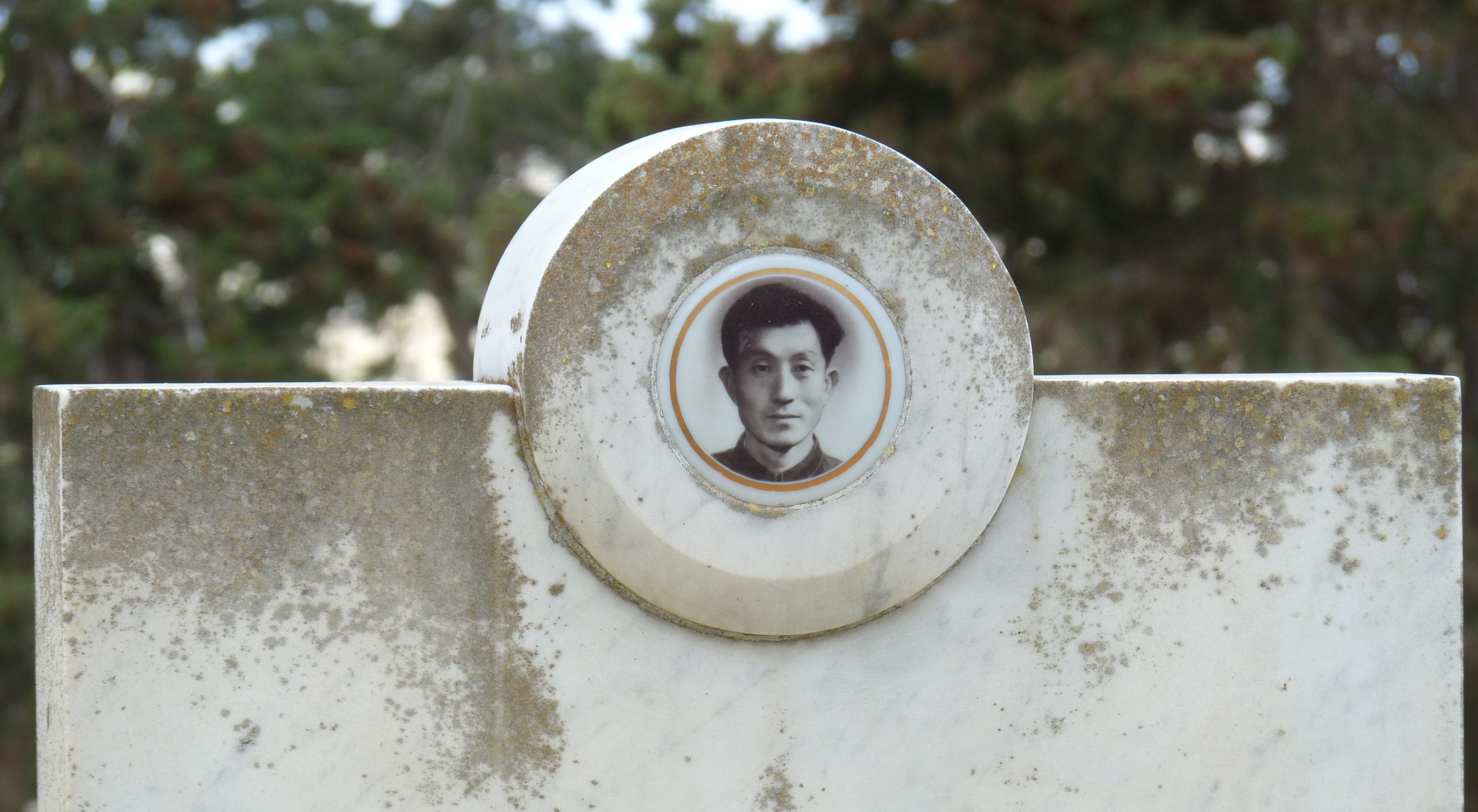
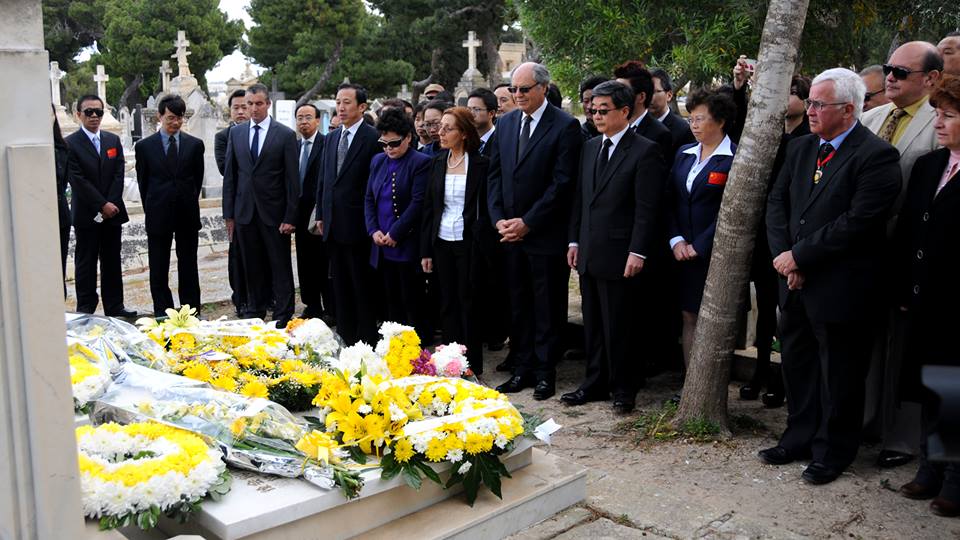
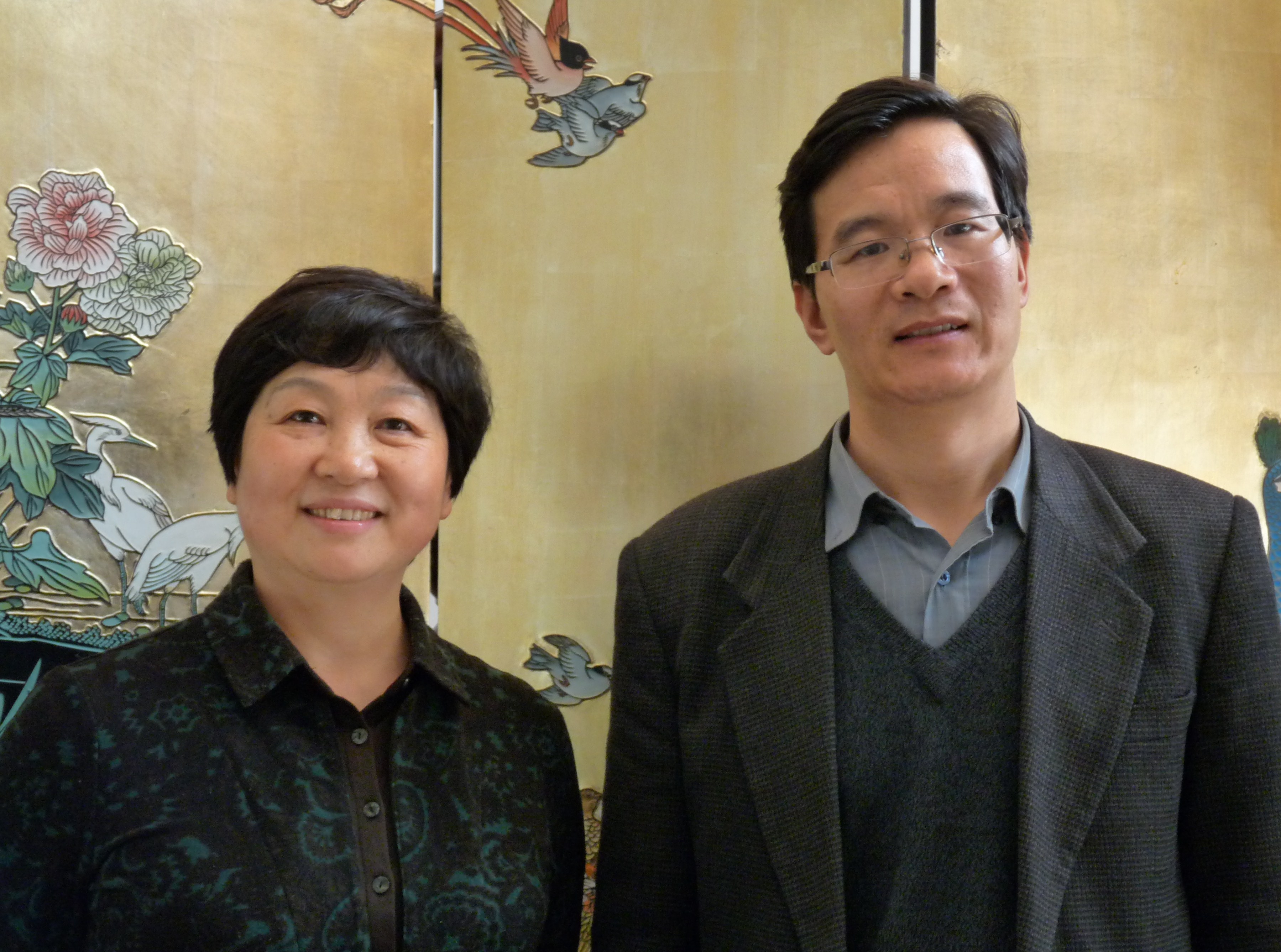
On 5th April 2014, representatives from the Embassy of the People’s Republic of China in Malta and a number of Chinese persons, together with some Maltese individuals, including Malta Minister of Finance, Edward Scicluna, Mayor of Santa Luċija, Frederick Cutajar, and members of the Malta-China Friendship Society, attended to a ceremony in respect of two Chinese workers who died in our country in 1979.
These two workers formed part of a group of hundreds of Chinese workers who were sent by the Chinese government in order to assist Malta in the construction of Dock Number 6 or as it is popularly known as the Red China Dock. This took place according to an agreement between China and Malta in the 1970s, wherein China agreed to help our islands in order to strengthen our economy.
The two Chinese workers who lost their life in Malta
Unfortunately, Xu Huizhong, a Chinese engineer aged 47, lost his life tragically on the 16th March 1979 whilst he was assisting in the construction of the dock. He was honoured with the Medal of Honour of the Republic of Malta on the 23rd April 1979. On the other hand, engineer Gu Yanzhao, died of natural causes at the age of 46.
These two Chinese workers were buried in Malta according to their relatives’ decision since in Chinese culture, it is believed that in order to rest in peace, these individuals had to be present on the same land when the project on which they were working was successfully finished. Moreover, they believed that in this way, they would continue to be remembered with respect by the Maltese people.
In the words of Minister Scicluna, “There is no higher sign of friendship than to give your life in order to help another country.” And now that with these articles, I am getting much fonder of China and its people, I could not allow myself not to investigate more this story and all the narrative that I knew that I would discover…
The ancient tradition of the Qingming Festival
I started my exploration by visiting the tomb of these two Chinese workers which is located at the Addolorata cemetery. I took with me a colourful bunch of flowers as a sign of respect and love. However, when I arrived in front of these tombs, I realized that I had met another Chinese cultural aspect as unlike my bunch, all the flowers that were left on these tombs after the ceremony, were white and yellow. As soon as I returned home, I researched about this and I learnt that this was part of the ancient Chinese tradition known as Qingming Festival.
In order to help me to understand better this concept, this week, I met Qiu Guangling and her assistant, Shi Qidong, at the Embassy of the People’s Republic of China in Malta. They informed me that this festival formed part of the 24 aspects of the Chinese lunar calendar wherein among the various celebrations, people celebrate the beginning of the Spring season and the rememberance of their dead ancestors. Some refer to this festival as Pure Brightness Day or Tomb-Sweeping Festival and this generally takes place around the 5th April.
The legend of Jie Zitui
Often, the Qingming Festival is associated with Jie Zitui who during the 7th century B.C. lived in the province of Shanxi. It is said that he was one of the few officials who followed Chong Er, the son of the Duke of Jin, when he had to leave due to severe restlessness in his country.
Chong Er lived for 19 years in exile and his situation became so miserable that eventually everyone abandoned him, except for five individuals, including Jie Zitui. This official respected his leader so much that when Chong Er was dying of hunger, he cut a piece from his thigh and cooked it for him so that he could get back his strength.
Finally, there came a time when Chong Er succeeded to win back his deserved throne and he returned to Jin as a leader. Together with him, he took those loyal officials who had remained with him through the worst time and he gave them the title of noblemen. Yet for some reason, Chong Er forgot Jie Zitui who now was an invalid due to the personal sacrifice that he had done for his master.
Nonetheless, when Chong Er realized his mistake, he immediately went to Mian mountain in order to find Jie Zitui who had gone to live there with his mother. But Jie Zitui had discovered serenity in this natural refuge of the mountain environment and he did not want to leave it to return to the city. Therefore, although he was aware that Chong Er was looking for him, he remained hidden with the hope that his friend will eventually give up and leave him alone.
Yet this did not take place, for Chong Er was so resilient to find him that he decided to set the mountain forest on fire in order to force his friend out of his hideout. The huge fire which was lit continued to burn for three days until all the mountain was burnt out. Alas, when the people of Chong Er went in to look for Jie Zitui, they found him burnt together with his mother.At these terrible news, Chong Er fell into miserable grief for what he had done and out of respect towards these two persons, he buried them at the foot of Mount Mian and changed its name to Jie. Moreover, he built a temple on it in honour of their memory.
In order to remember this tragedy, he ordered that each year in those particular three days, nobody could light a fire in his house and only cold food could be eaten. This started the Hanshi or the Cold Food Festival.
Then, around 300 years ago, during the Qing Dynasty, this festival was incorporated witin the Qingming Festival and this event was changed into a celebration of rememberance and sacrifice for the ancestors. Nowadays, the Cold Food Festival is celebrated a day before the Qingming and the activities continue for three whole days.
Just like we do in November, when we visit our cemeteries in order to show respect towards our dead relatives, in China these activities take place in April. Indeed, during this festival, a lot of Chinese people gather into cemeteries wherein they clean the tombs, repaint the calligraphy on them, burn incense and leave white and yellow chrysanthemums which in Chinese culture symbolize sadness and grief. Furthermore, they offer food and drink to their dead, and relatives meet on the tombs or in the surrounding gardens in order to eat together.
Yin House Feng Shui
It is interesting to know that when one is choosing a place for burial in China, usually, Feng Shui experts are called according to an ancient tradition. The main aim of Yin House Feng Shui is to choose the correct site for burial so that the energy of the dead is turned into a positive one in order to bring luck to their families. In fact, Chinese people believe that if the dead are not allowed to rest in peace in a place which guarantees their serenity, their living relatives would incur dire consequences.
The Imperial Tombs of China
This principle regarding tombs originated when man created the concept of a soul and therefore introduced also the idea of a life after death. Therefore, along the years we can observe various transitions in tombs which serve as a mirror of the ideas of the society which made them. In fact, as time passed, we can notice that tombs became more refined until in the period of the greatest dynasties, the imperial tombs took the shape of whole temples in the belief that the leader could continue to enjoy the same beautiful environment that he was used to during his life even after death.
The Mausoleum of Emperor Qin Shi Huang
This mausoleum was constructed by the Emperor Qin Shi Huang in the 3rd century B.C. in order to serve as his tomb. This enormous building was one of the first structures which were built for this reason, wherein the surrounding environment was chosen appositely in order to offer the right ambience to the emperor after his death.
According to ancient writers, originally, this mausoleum was around 120 metres high and its base was 2167 square metres. Many trees and plants were sown in the area in order to embellish the zone. A dike that was 10 metres high and 1400 metres wide was constructed to avoid inundation of the territory from the nearby rivers. Moreover, the course of the river that passed through the south of the mausoleum was altered and its new route led to Weihe river so that its waters would not be an obstacle.
It is estimated that around 12.8 million cube metres of earth were used in order to build the foundation of the emperor’s tomb and those of nearby tombs in the same site, together with the construction of the dike and the manufacturing of the statues that were made to adorn the place. Meanwhile, a further 1.2 million cubic metres of earth were required to fabricate the emperor’s tomb. It is interesting to note that all this stone was cut from the quarries of Mount Ganquan which was located 200 km away from the site of this mausoleum!
In the meantime, Emperor Qin Shi Huang ordered to put priceless artistic works of great skill in his tomb, including jewels made of gold and silver, artworks, writings, clothing and many more accessories. Finally, there was so much wealth in this mausoleum that it was too difficult to calculate how much time, work, material, money and lives it came to cost. Yet certainly, once the emperor died, he buried everything with him and without knowing, he conserved some of the best cultural treasures which were to be enjoyed by later generations.
However, the emperor wanted more than this as an accompaniment to his voyage after death. In fact, in order to build this tomb, apart from the best tradesmen who were selected, its construction which involved many years, was done my many criminals, by farmers who had not paid the taxes and by slaves. Besides the emperor’s tomb, these were ordered to build another tomb that was located around 1400 metres away and finally all the criminals were buried in it once the emperor was dead. In fact, during archaeological excavations, an area of 1200 metre squared of human bones was unearthed.
Ironically, though the emperor was preparing such a fantastic place for himself after death, he was terrified of death and he dedicated many years in search of the elixir of life in order to acquire the font of eternity. Since he was a cruel tyrant, there were several attempts on his life but he always succeeded to avoid getting killed. Until eventually luck left him when during one of his voyages, he swallowed some mercury pills which were supposed to prolong his life!
Ultimately, Emperor Qin Shi Huang was so much hated by the people, that his dynasty ended soon after his death and his tomb was robbed and burnt more than once. Yet this mausoleum was so huge that in 1974, whilst some Chinese farmers were digging to construct a well, they came upon another part of this site which was still intact and everyone was surprised.
A group of archaeologists was called in order to excavate this place and among the enormous and unique discoveries, they found also a whole army of terracotta soldiers which were accompanied by horses with carriages of actual size. Hundreds of such soldiers were found and each of them had individual faces with different characteristics. However, it is believed that there are around 8000 soldiers in all to be unearthed. Moreover, it seems that there are also 130 carriages with 520 horses, and 150 cavalry horses buried in this mausoleum.
Each year, this discovery attracts thousands of tourists to this site and when some of these artifacts are exhibited in other countries, many people go to visit them. This fact was confirmed also by the Senior Curator of the Malta National Museum of Archaeology, Sharon Sultana, when in 2007 an exhibition with 81 artifacts from the mausoleum of Qin Shi Huang, consisting of 10 terracotta soldiers and 2 horses were displayed in this museum.
Other traditions related to Qingming Festival
Since this festival takes place during the beginning of Spring, this is the time when farmers start to plough and sow their fields. This is also a period when many beautiful flowers enhance the Chinese landscape and so part of these celebrations include also walks in the splendid countryside. These days offer also particular moments for young people to meet and many new love stories begin at this time. As a cheerful greeting to this new season, the sky is filled with numerous kites that are made with great skill and in various forms and so these days are also enriched with beautiful and positive memories.
(This is a translation of an original article which was published in Maltese in the series PONT MAĊ-ĊINA (5th Part) in the newspaper Torċa dated 20th April 2014)
-
PONT MAĊ-ĊINA – IL-ĦAMES PARTI – B’tislima
Fil-5 t’April 2014, rappreżentanti mill-Ambaxxata taċ-Ċina f’Malta u numru oħra ta’ persuni Ċiniżi, ngħaqdu ma’ xi individwi Maltin, fosthom mal-Ministru tal-Finanzi, Edward Scicluna, mas-Sindku ta’ Santa Luċija, Frederick Cutajar u ma’ membri tal-Malta-China Friendship Society, sabiex jattendu għal ċerimonja ta’ tifkira taż-żewġ ħaddiema Ċiniżi li tilfu ħajjithom f’pajjiżna fl-1979. Dawn iż-żewġ ħaddiema kienu jiffurmaw parti minn mijiet ta’ Ċiniżi li ntbagħtu mill-gvern tagħhom f’pajjiżna, sabiex jgħinu fil-kostruzzjoni tad-Dry Dock numru 6, jew kif inhu magħruf illum, ir-Red China Dock. Dan sar wara ftehim fis-sebgħinijiet bejn iċ-Ċina u Malta, fejn iċ-Ċina qablet li tagħti daqqa t’id lill-gżejjer tagħna li kienu għadhom qed jirkupraw biex ikabbru l-ekonomija tagħhom.
Iż-żewġ ħaddiema Ċiniżi li tilfu ħajjithom f’Malta
Sfortunatament, Xu Huizhong, inġinier Ċiniż ta’ 47 sena, tilef ħajtu traġikament fis-16 ta’ Marzu 1979 waqt li kien qed jaqdi dmiru fil-bini tal-baċir. Huwa ġie onorat bil-Midalja Għall-Qadi tar-Repubblika fit-23 t’April 1979. Min-naħa l-oħra, l-inġinier Gu Yanzhao, miet b’kawża naturali fl-età ta’ 46 sena, waqt li hu wkoll kien qed jaħdem fl-istess baċir. Kienu l-familjari tagħhom stess li għażlu li dawn iż-żewġ ħaddiema jindifnu f’Malta sabiex b’hekk huma jsibu l-mistrieħ u l-paċi fil-pajjiż li ħadmu għalih. Il-familjari xtaqu wkoll li permezz ta’ din id-deċiżjoni, dawn l-għeżież tagħhom ikunu ‘preżenti’ meta l-proġett jitlesta u li l-quddiem, in-nies tal-lokal jibqgħu jiftakruhom b’rispett.
Fi kliem il-Ministru Scicluna, “M’hemmx sinjal akbar ta’ ħbiberija minn dik li tagħti ħajtek biex tgħin lil pajjiż ieħor.” U hekk kif bħalissa, permezz ta’ dawn l-artikli, qiegħda kull ma mmur nersaq u ninġibed aktar lejn iċ-Ċina u lejn niesha, ma stajtx inħalli dan il-mument jgħaddi mingħajr ma nistħarreġ aktar din l-istorja u dak kollu li bsart li se ġġib magħha….
It-tradizzjoni antika taċ-Qingming Festival
Bdejt billi żort il-qabar ta’ dawn iż-żewġ ħaddiema Ċiniżi li jinsab fiċ-ċimiterju tal-Addolorata. Miegħi ħadt bukkett fjuri sabiħ ikkulurit biex nuri sinjal ta’ rispett u mħabba. Iżda hekk kif wasalt quddiem il-qabar, mill-ewwel intbaħt li kont erġajt missejt ma’ xi aspett ieħor tal-kultura Ċiniża, hekk kif il-fjuri kollha li kienu tħallew qabel waqt iċ-ċerimonja msemmija, kienu ta’ lewn abjad u isfar. Mort mill-ewwel lura d-dar sabiex nifhem aħjar x’kien qed jiġri u sibt li din il-funzjoni annwali kienet tagħmel parti minn tradizzjoni antika Ċiniża magħrufa bħala Qingming Festival.
Sabiex jgħinuni nifhem aktar dan il-kunċett, din il-ġimgħa ltqajt ma’ Qiu Guangling u ma’ l-assistent tagħha, Shi Qidong, ġewwa l-Ambaxxata taċ-Ċina f’Malta. Huma infurmawni li dan il-festival jifforma parti mill-24 aspett tal-kalendarju lunari Ċiniż fejn fosthom matulu jiġu ċċelebrati l-bidu tar-Rebbiegħa, u t-tifkira tal-antenati u tal-mejtin. Hemm min jirreferi għal dan il-Festival bħala ‘Pure Brightness Day’ jew inkella ‘Tomb-Sweeping Festival’ u dan dejjem jaħbat madwar il-5 t’April.
Il-leġġenda ta’ Jie Zitui
Iċ-Qingming Festival sikwit jiġi assoċċjat ma’ Jie Zitui li fis-7 seklu Q.K. kien jgħix fil-provinċja ta’ Shanxi. Jingħad li hu kien wieħed mill-ftit uffiċċjali li segwa lill-Chong Er, it-tifel tad-Duka ta’ Jin, meta dan kellu jħalli l-pajjiż minħabba nkwiet kbir li nqala’. Chong Er għex għal 19 il-sena fl-eżilju u s-sitwazzjoni li kien jgħix fiha tant kienet miżerabbli, li finalment abbandunah kulħadd, apparti ħames individwi, fosthom Jie Zitui. Dan l-uffiċċjal tant kien jirrispetta lill-kap tiegħu li meta darba minnhom Chong Er kien qed imut bil-ġuħ, huwa qata’ parti minn kuxxtejh u sajjarhielu ħalli dan ikun jista’ jistejqer b’laħmu.
Intant, ġie żmien meta Chong Er irnexxielu jerġa’ jirbaħ it-tron li kien jistħoqqlu u huwa reġa’ lura lejn Jin bħala mexxej. Miegħu huwa ħa lill-uffiċċjali li kienu baqgħu leali lejh fi żmien tant imwiegħer u lil dawn tahom it-titlu ta’ nobbli. Imma għal xi raġuni, huwa nesa lil Jie Zitui li ormaj kien invalidu minħabba s-sagrifiċċju li kien għamel għall-kap tiegħu. Madanakollu, Chong Er ma damx ma ntebaħ bl-iżball li għamel u għalhekk huwa erħilha lejn il-muntanja Mian biex ifittex lil Jie Zitui, fejn dan kien mar joqgħod m’ommu. Iżda Jie Zitui kien sab l-hena fir-rifuġju tan-natura tal-ambjent tal-muntanja u b’xejn ma ried imur lura lejn il-belt. Għaldaqstant huwa baqa’ mistoħbi bit-tama li Chong Er jaqta’ qalbu u jħallih fil-paċi. Imma dan ma kellux ikun għax meta l-mexxej baqa’ ma sabx lil ħabibu, huwa tant webbes rasu li ried isibu, li ordna li l-foresta tal-muntanja tingħata n-nar ħalli Jie Zitui jiġi sfurzat joħroġ mill-moħba tiegħu. In-nar dam jaqbad tliet ijiem sakemm inħarqet il-muntanja kollha u meta n-nies ta’ Chong Er marru jfittxu lil Jie Zitui, huma sabuh maħruq flimkien m’ommu. Chong Er iddispjaċih ferm għalli ġara u b’rispett lejn dawn iż-żewġ individwi, huwa difinhom ħdejn il-muntanja Mian li bidlilha isimha għal Jie, u fuqha huwa bena tempju għall-memorja tagħhom.
Bħala tifkira ta’ din it-traġedja, huwa ordna wkoll li kull sena, proprju f’dawk it-tliet ijiem, ħadd ma seta’ jqabbad nar fid-dar, u l-ikel kellu jittiekel kiesaħ biss. Kien hawnhekk li ngħata l-bidu għal ‘Hanshi’ jew ‘Cold Food Festival’. Aktar tard, madwar 300 sena ilu, fi żmien id-Dinastija Qing, dan il-Festival twaħħad maċ-Qingming Festival u l-okkażjoni nbidlet f’waħda ta’ tikira u sagrifiċċju għall-antenati. Illum, il-‘Cold Food Festival’ jiġi ċċelebrat ġurnata qabel iċ-Qingming u l-attivitajiet jibqgħu sejrin għal tliet ijiem sħaħ.
Hekk kif aħna nagħmlu fil-bidu ta’ Novembru, meta nżuru ċ-ċimiterji u nuru r-rispett tagħna lejn qrabatna mejtin, fiċ-Ċina dan isir fil-bidu t’April. Għadd kbir ta’ nies jinġabru fiċ-ċimiterji biex inaddfu l-oqbra, jiżbgħu mill-ġdid il-kalligrafija li jkollhom miktuba fuqhom, jixgħelu l-inċens, u jħallu kriżantemi bojod u sofor, liema fjuri fil-kultura Ċiniża jesprimu s-swied il-qalb u n-niket. Barra minn hekk, huma joffru wkoll xi ikel u xorb lill-mejtin tagħhom u wara l-familjari jinġabru fuq il-qabar stess jew fil-ġonna tal-madwar sabiex jieklu dan l-ikel flimkien.
Yin House Feng Shui
Ta’ min isemmi illi meta jiġi biex jintagħżel sit għad-dfin, fiċ-Ċina jitqabbdu esperti tal-Feng Shui, liema użanza tikkonsisti minn forom ta’ arti u xjenza antiki li nħolqu f’dan il-pajjiż madwar 3000 sena ilu. L-għan prinċipali tal-Yin House Feng Shui huwa illi permezz ta’ għażla għaqlija tal-art fejn jindifnu l-mejtin, l-enerġija tagħhom tiġi mibdula f’enerġija pożittiva sabiex din tiġi riflessa f’riżq għall-familjari. Infatti ċ-Ċiniżi jemmnu illi jekk il-mejtin ma jitħallewx jistrieħu fil-paċi f’post li jassiguralhom serenità, il-familjari l-ħajjin isofru l-konsegwenzi.
L-oqbra imperjali taċ-Ċina
Dan il-prinċipju dwar l-oqbra ra l-bidu tiegħu meta l-bniedem ħoloq il-kunċett tar-ruħ u b’hekk daħħal ukoll l-idea ta’ ħajja oħra wara din. Għalhekk matul is-snin insegwu diversi tibdiliet fl-oqbra u dawn iservu bħala mera tal-ideat tas-soċjetà li tkun sawwrithom. Aktar ma jgħaddi ż-żmien, l-oqbra bdew kull ma jmur jirraffinaw ruħhom sakemm fil-perjodu ta’ wħud mill-aktar dinastiji qawwija, l-oqbra imperjali ħadu s-sura ta’ tempji sħaħ bil-ħsieb li l-mexxej seta’ jgawdi l-istess ambjent li kien imdorri fih f’ħajtu, anki wara mewtu.
Il-Musulew tal-imperatur Qin Shi Huang
Dan il-musulew inbena mill-imperatur Qin Shi Huang fit-3 seklu Q.K. sabiex iservi bħala l-qabar tiegħu. Din il-binja enormi kienet waħda minn ta’ l-ewwel ta’ din ix-xorta, fejn l-ambjent tal-madwar intagħżel apposta sabiex joffri l-atmosfera ġusta għall-imperatur wara li jmut. Skont kittieba antiki, oriġinarjament, dan il-musulew kien madwar 120 metru għoli u l-bażi tiegħu kellha qies ta’ 2167 metru. Diversi siġar u pjanti ġew imħawwla fl-inħawi sabiex isebbħu l-post, filwaqt li nbena lqugħ għall-ilma b’għoli ta’ 10 metri u tul ta’ 1400 metru ħalli jiġi evitat li l-ilma tax-xmajjar li kienu fil-qrib jgħerrqu l-inħawi. Barra minn hekk, inbidel il-kors tax-xmara li kienet tagħti lejn in-nofsinhar ta’ dan il-musulew u minflok il-passaġġ tagħha ddawwar fix-xmara Weihe ħalli b’hekk ilmijietha ma jkunux ta’ ostaklu.
Huwa stmat illi ntużaw madwar 12.8 miljun metru kubu ta’ art biex biha tissawwar l-art tal-qabar tal-imperatur u ta’ xi oqbra oħra fl-istess sit, flimkien mal-kostruzzjoni tal-ilqugħ tal-ilma u tal-istatwi li kellhom jitpoġġew fil-post. Barra minn hekk, kien hemm bżonn ukoll 1.2 miljun metru kubu ieħor ta’ art sabiex biha jinbena l-qabar tal-imperatur. Ta’ min isemmi illi dan il-ġebel kollu ġie maqtugħ minn barrieri fil-muntanja Ganquan li kienet tinsab 200 kilometru bogħod mis-sit tal-musulew!
Għal ġewwa dan il-qabar, l-imperatur Qin Shi Huang, ordna li jitpoġġew ukoll xogħolijiet imprezzabbli artistiċi u ta’ sengħa mill-aqwa, fosthom ġojjelli maħduma mid-deheb u l-fidda, tpinġijiet, kitbiet, ħwejjeġ u drappijiet u għadd ta’ dekorazzjonijiet oħra. Finalment, tant kien hemm ġid ġewwa dan il-musulew li huwa diffiċli biex wieħed jikkalkula kemm dawn setgħu swew ħin, xogħol, ħajjiet, materjal u flejjes. Imma ċertament, hekk kif l-imperatur miet u difen kollox miegħu, huwa refa wirt kulturali mill-ifjen għall-ġenerazzjonijiet ta’ wara.
Iżda l-imperatur ried aktar minn hekk bħala akkompanjament għall-vjaġġ tiegħu wara mewtu. Infatti biex inbena dan il-qabar, apparti li kienu ntagħżlu l-aqwa nies tas-sengħa, il-kostruzzjoni tiegħu li ħadet snin sħaħ, saret minn bosta kriminali, bdiewa li ma ħallsux it-taxxi, u skjavi. U flimkien mat-tiswir ta’ qabar l-imperatur, dawn kellhom jibnu wkoll qabar ieħor fuq art li kienet tinsab 1400 metru bogħod, li finalment laqgħet fiha lill-kriminali li ndifnu flimkien mal-imperatur mejjet. Infatti, waqt skavi arkeoloġiċi, instab li dan il-qabar kellu medda ta’ madwar 1,200 metru kwadru u li kien miżgħud bl-għadam uman.
Ironikament, għalkemm kien qed ilesti post tant fantastiku għal wara mewtu, dan l-imperatur kien beżgħan ferm mill-mewt u għamel snin sħaħ ifittex il-famuż eliżir tal-ħajja sabiex jakkwista l-font tal-eternità. Minħabba li hu kien tirann krudili, saru diversi attentati fuq ħajtu imma dejjem irnexxielu jiskappaha. Sakemm darba xortih ħallietu u huwa miet waqt vjaġġ wara li bela’ xi pilloli tal-merkurju li suppost kellhom itawwlulu ħajtu!
L-imperatur Qin Shi Huang tant kien mibgħud li wara mewtu, id-dinastija tiegħu ntemmet fi ftit taż-żmien u l-qabar tiegħu ġie misruq u maħruq aktar minn darba. Madanakollu, dan il-musulew tant kien massiċċ illi fis-sena 1974, waqt li xi bdiewa Ċiniżi kienu qed iħaffru bir, huma sfrundaw f’parti oħra li kienet għadha ma ġġarfitx u dak li nstab ħalla lil kulħadd mistagħġeb. Grupp ta’ arkeoloġisti ntbagħtu minnufih biex jiskavaw u jieħdu ħsieb is-sit fejn fost is-sejba enormi u unika, kien hemm armata kbira ta’ suldati tat-terrakotta akkumpanjati minn numru ta’ karrijiet biż-żwiemel, kollha b’daqs reali. Għalkemm instabu mijiet minn dawn is-suldati li kull wieħed ġie maħdum b’mod individwali u b’fattizzi u pożizzjonijiet differenti, huwa maħsub li b’kollox hemm madwar 8,000. Barra minn hekk, jidher li hemm ukoll 130 karru b’520 żiemel, u 150 żiemel tal-kavallerija midfuna f’dan il-musulew.
Kull sena din is-sejba tiġbed eluf ta’ turisti lejn dan il-post. U kull meta tittella’ xi esebizzjoni f’pajjiżi oħra b’xi wħud minn dawn l-oġġetti li nstabu, din dejjem ikollha ħafna konkorrenza. Dan stqarritu wkoll il-Kuratriċi Anzjana tal-Mużew Nazzjonali tal-Arkeoloġija f’Malta, Sharon Sultana, meta fl-2007 f’pajjiżna ttelgħet esebizzjoni b’81 artifatt minn dan il-musulew tal-imperatur Qin Shi Huang, li fosthom kienu jinkludu 10 suldati tat-terrakotta u żewġt iżwiemel.
Tradizzjonijiet oħra li jsiru waqt iċ-Qingming Festival
Peress li dan il-festival jaħbat ukoll mal-bidu tar-Rebbiegħa, dan hu ż-żmien meta l-bdiewa jibdew jaħartu u jiżirgħu l-art tagħhom. Hu wkoll perjodu fejn diversi fjuri sbieħ jibdew isebbħu l-inħawi u għaldaqstant, parti miċ-ċelebrazzjoni tinkludi wkoll mixjiet fil-kampanja. Dan huwa wkoll mument fejn bosta żgħażagħ jiltaqgħu flimkien u bosta stejjer ġodda ta’ mħabba jibdew proprju f’dawn il-ġranet. Bħala tislima ferriħija għall-bidu ta’ dan l-istaġun ġdid, is-sema tintela’ b’għadd kbir ta’ manuċċi (jew tajr) maħdumin b’sengħa mill-aqwa u f’forom diversi u b’hekk dawn il-ġranet jiżżewqu anki b’memorji sbieħ u pożittivi.
(Dan l-artiklu ġie ppubblikat fit-Torċa ta’ l-20 t’April 2014)
-
Rekord mirbuħ b’purċissjoni ta’ 973 pastur
Għal numru ta’ dilettanti tal-Ġimgħa Mqaddsa, dawn l-aħħar ġranet ikunu mill-aktar sinifikanti hekk kif dawn ikunu qed jistennew bi ħġarhom lill-pubbliku sabiex jiġi jara l-wirjiet tagħhom. Dilettanti oħra jhedew iduru minn post għall-ieħor madwar Malta u Għawdex sabiex jitpaxxew b’dawn l-esebizzjonijiet li kollha jkollhom dik ix-xeħta partikolari tagħhom.
 Ċertament waħda mill-aktar esebizzjonijiet li ġibdet l-interess tal-pubbliku kienet il-wirja msejjħa ‘Triq il-Kalvarju’ li ġiet imtellgħa minn Laurence Mamo fil-Palazzo Xara, każin tal-banda l’Isle Adam, fir-Rabat, Malta. Dan minħabba li din il-wirja ta’ pasturi b’tema tal-Ġimgħa Mqaddsa, kienet armata fuq medda ta’ madwar 50 metru u kienet tikkonsisti f’973 pastur tat-terracotta li kollha ġew maħduma, miżbugħa u mżejjna bl-idejn. Biex tlesta dan ix-xogħol kollu, Laurence ħa tliet snin u biex ħadem dawk il-pasturi, huwa uża mal-130 kilo tafal. Il-pasturi jinkludu għaqdiet ta’ baned u ta’ fratellanzi, reffiegħa tal-vari, suldati Rumani u Iżraeliti, abbatini, qassisin, Lhud bit-torċi u l-bsaten f’idejhom, għadd ta’ personaġġi u nies mill-pubbliku bir-reazzjonijiet differenti tagħhom skont il-vara li tkun għaddejja minn quddiemhom.
Ċertament waħda mill-aktar esebizzjonijiet li ġibdet l-interess tal-pubbliku kienet il-wirja msejjħa ‘Triq il-Kalvarju’ li ġiet imtellgħa minn Laurence Mamo fil-Palazzo Xara, każin tal-banda l’Isle Adam, fir-Rabat, Malta. Dan minħabba li din il-wirja ta’ pasturi b’tema tal-Ġimgħa Mqaddsa, kienet armata fuq medda ta’ madwar 50 metru u kienet tikkonsisti f’973 pastur tat-terracotta li kollha ġew maħduma, miżbugħa u mżejjna bl-idejn. Biex tlesta dan ix-xogħol kollu, Laurence ħa tliet snin u biex ħadem dawk il-pasturi, huwa uża mal-130 kilo tafal. Il-pasturi jinkludu għaqdiet ta’ baned u ta’ fratellanzi, reffiegħa tal-vari, suldati Rumani u Iżraeliti, abbatini, qassisin, Lhud bit-torċi u l-bsaten f’idejhom, għadd ta’ personaġġi u nies mill-pubbliku bir-reazzjonijiet differenti tagħhom skont il-vara li tkun għaddejja minn quddiemhom.Matul il-purċissjoni wieħed seta’ jara wkoll xeni sbieħ impinġija ta’ djar u triqat tipikament Maltin, maħduma minn Claudio Micallef. Min-naħa l-oħra, is-simboli relatati mal-Passjoni ta’ Kristu, flimkien mal-bandalori tad-drapp b’disinn oriġinali u b’pitturi, saru minn Melanie Grech.
 Is-sett tal-vari li kienu esebiti f’din il-purċissjoni huma xogħol fit-tafal Malti tal-imgħallem Carmelo Agius mill-Gwardamangia u dawn inħadmu fl-1970. Għal Laurence, dawn il-vari huma ta’ valur kbir sentimentali peress li dawn kienu nxtrawlu mill-mibki missieru Edgar meta huwa kellu biss sitt snin. Oriġinarjament is-sett kien jikkonsisti minn għaxar vari imma fl-2005 żdiedet ukoll il-vara taċ-ċena; xogħol Pawlu Muscat minn Birkirkara.
Is-sett tal-vari li kienu esebiti f’din il-purċissjoni huma xogħol fit-tafal Malti tal-imgħallem Carmelo Agius mill-Gwardamangia u dawn inħadmu fl-1970. Għal Laurence, dawn il-vari huma ta’ valur kbir sentimentali peress li dawn kienu nxtrawlu mill-mibki missieru Edgar meta huwa kellu biss sitt snin. Oriġinarjament is-sett kien jikkonsisti minn għaxar vari imma fl-2005 żdiedet ukoll il-vara taċ-ċena; xogħol Pawlu Muscat minn Birkirkara.Intant, fi tmiem il-purċissjoni Laurence ma naqasx li jinkludi wkoll l-istatwa tal-irxoxt. U peress li huwa oriġinarjament mill-Birgu, ma setax jonqos li għalkemm il-bqija tal-purċissjoni tkun biss iffurmata fuq l-immaġinazzjoni tiegħu, din l-aħħar parti tkun ibbażata fuq il-ġirja tal-irxoxt tal-Birgu. Ta’ min jgħid illi dan il-mudell huwa uniku f’Malta u jikkonsisti f’xejn inqas minn 150 figurin tat-terracotta. Dan is-sett inħadem ukoll minn Laurence fejn hu dam aktar minn sitt xhur biex lestih. F’dan il-mudell li jesprimi proprju l-ġurnata li qed niċċelebraw illum, wieħed seta’ jara t-tiżjin u l-ferħ li jisbaħ bih Ħadd il-Għid, bl-irġiel u ż-żgħażagħ jiġru għalenija bi Kristu rxoxt f’idejhom fost l-għajjat u ċ-ċapċip tal-folla preżenti.
Is-sena li għaddiet, Laurence Mamo kellu l-unur li jtella’ din l-esebizzjoni għall-ewwel darba ġewwa l-Palazz tal-President f’Sant’Anton. Madanakollu, anki waqt l-esebizzjoni ta’ din is-sena, huwa kellu biex ikun kburi hekk kif il-ġimgħa li għaddiet, huwa rċieva ċertifikat mill-Malta Records, għall-akbar numru ta’ figuri ta’ 10 ċentimetri esebiti waqt wirja tal-Ġimgħa l-Kbira.
-
The story of a relative of a Titanic survivor
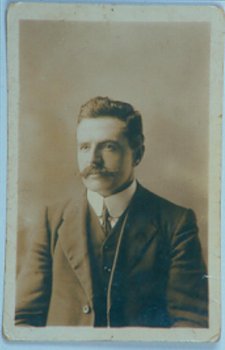
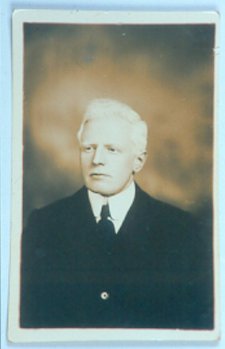

At 11:40 p.m. on April 14th 1912, RMS Titanic, the largest ocean liner ever built by the hands of man, hit an iceberg which ripped holes in several of its water-tight compartments, dooming its destiny and that of all its passengers. A few hours later, at 2.20am, the survivors that managed to get on the few boats that were available, watched the horrifying spectacle of the Titanic with its lights shining brightly and with more than 1500 passengers still on board, being engulfed in the deep dark and icy abyss.
It was a night where so many significant and difficult decisions had to be taken quickly since they determined who was to survive and who would be left behind. Certainly there were the shameful arrangements where the richest passengers were selected from the others in order to leave the ship first. However there were also the heroic instances wherein several men opted to stay behind in order to allow the survival of more women and children. So who knows what would have been the fate of Alexander James Littlejohn, a First Class Steward on the Titanic, had he not been ordered to get on board life-boat 13 in order to row about 35 women and children to safety?
During his lifetime, Alexander J Littlejohn rarely talked about this tragic night, like most of the other survivors. Yet in 1912, he gave this graphic eye-witness account of the sinking of the Titanic to The Daily Telegraph:
“I went to fill up Boat 13 and got about 35 women and children into it. We shouted for more women but there were none forthcoming. We had a few First Class male passengers in. An officer ordered two of us to get in and help row the boat and I happened to be one of the fortunate ones to be ordered in…. We could see the Titanic sinking by the head. Her forward ‘E’ deck ports were under the water and we could see the lights gradually go out on the ‘E’ deck as she settled down. All her other lights were burning brilliantly from stem to stern. We watched her like this for some time, and then suddenly she gave a plunge forward and all the lights went out. Her stern went right up in the air. There were two or three explosions and it seemed to me that the stern part came down again and righted itself. Immediately after there were terrible cries for help; they were awful and heartbreaking.”
For several years, Alexander had run two pubs The Rising Sun in London, and the Crown in Hastings, Sussex. He only went to sea after his wife died in 1910, leaving him with three young children. His sister looked after them and he joined the White Star Line Company in 1911. Incidentally, his first appointment was on the RMS Olympic’s maiden voyage and the following year, he joined the RMS Titanic which was also going on its first crossing at sea. Nonetheless, the similarity between the two ended there as the latter journey marked both his life and his appearance.
His grandson, Philip Littlejohn, has compelling proof which manifests clearly the shock that his grandfather had suffered during that particular night. Indeed, in a photo taken some time prior to his embarkation on Titanic, Alexander is portrayed as a man aged 40 with dark hair and a heavy moustache, and yet in another photo taken just six months after the disaster, he looks notably different, particularly with his white hair and eyebrows. Surprisingly, despite this traumatic experience of surviving the sinking of the Titanic, Alexander returned to sea in October 1912.
Without knowing, in life-boat 13, Alexander had rowed to safety the youngest Titanic survivor, Millvina Dean, who was only nine weeks old at the time, which person would also be the last living link to the Titanic disaster since she outlived all the other survivors. Alas, the two never met each other again and Alexander died in 1949, aged 77. However Dean succeeded to meet his grandson Philip and he worked with her over a period of ten years on TV and radio. She died at the age of 97, in May 2009, and Philip was present for the ceremony when her ashes were scattered near the departure point of the fateful voyage.
Ironically, Millvina Dean and the Titanic shared the same age, and she had planned to join Philip Littlejohn and the rest of the passengers on the Titanic memorial cruise ship, MS Balmoral, which was chosen to commemorate the 100th anniversary from this bitter tragedy. Dean’s father was one of those brave men who had fought his way through the massive desperate crowd in order to get his wife and his two children safely on a life-boat and then he had bade them goodbye and turned away to await his gruesome end. Although Dean did not make it to be a 100, Philip included her story too during a series of lectures that he presented on board the MS Balmoral wherein he narrated the events leading up to the liner’s fateful collision, including eye-witness accounts and the rescue by the liner Carpathia.
The MS Balmoral set sail on the 10th April 2012 from Southampton in order to follow the exact route that the Titanic took 100 years before. It carried on it 1,309 paying passengers, the same number that were on board the Titanic. During its 12-night voyage, it offered meals from the Titanic’s original menu and a five-piece band recreated the atmosphere that the original team of artists had played on board the ill-fated ship. On the night of the 14th April, this memorial cruise stopped over the Titanic’s wreck site, and services were held in memory of those who lost their lives in 1912. Then, it continued its way to Halifax, Canada where many of those who lost their lives are buried. The voyage ended in New York, the place where Titanic was due to arrive a century before but never did.
Some critics thought that this idea was macabre and in bad taste. Yet Philip commented, “For me, this was the voyage of a lifetime and a chance to revisit a place that means so much to my family.” He insisted that this memorial cruise was a special remembrance opportunity which made possible, particularly to those whose relatives had been on board the Titanic, to visit the spot where so many dear ones had lost their lives.
In reality, Philip had already involved himself far more deeply in this Titanic story when on the 29th July 2001, he embarked on a dive of a life-time which led him right at the site of the Titanic’s wreck which lies at a depth of about 3,800m. Although quite a number of individuals have visited this area from the discovery of this wreck back in 1985, Philip is the first relative of a Titanic passenger or crew member to have made this experience.
“We went out using the same Russian ship used by James Cameron’s film crew when he was making the documentary, Ghosts of the Abyss,” he says. “The ocean was like a millpond. Looking like Formula 1 racing drivers in our blue flame-proof overalls (protection from fire in the oxygen rich interior), we boarded Mir 1 and were lowered into the ocean. The interior of the submersible seemed airless, as we watched through a one-foot thick porthole as water filled our view. The water turned from blue to green to black as we descended. There was no movement to indicate our descent, just the figures on the depth indicator increasing as we sank to the bottom of the Atlantic.”
“We were three on board including the Russian pilot. My companion had made an extensive study of the ship over a number of years and was excited at the thought of actually seeing the vessel. However my thoughts were with how my grandfather would have felt if he could have gone back to the vessel that he had left eighty-nine years before.”
“It took two-and-a-half hours to reach the wreck. Suddenly with the submersible lights switched on, we got our first sign of the Titanic; the expansion joint on the bow section. We were going round some other areas of the ship when at one moment we saw the lights of Mir 2 approaching out of the darkness. The two submersibles used their robotic arms in order to lay two plaques near the wreck; one from the British Titanic Society and one in memory of the postal workers, all of whom were lost trying to recover the mail soon after Titanic hit the iceberg.”
Certainly, one of the most memorable stages in this dive for Philip was when the submersible reached the area where the lifeboats had been filled with women and children, and where his grandfather had been ordered in by an officer to row life-boat 13. However, he was also very touched when they crossed the debris field which stretches for some 800 meters between the bow and stern sections of the Titanic. “It was this that I found the most moving part of the dive, as here were the Titanic’s passengers’ personal belongings which fell to the sea-bed as the ship broke in two and sank in the early hours of the 15th April 1912.”
This dive took six hours in all since they spent another two-and-a-half hours to reach back the ocean’s surface. Asked whether he was ever afraid that history might repeat itself during these close encounters with the Titanic’s wreck site, Philip dismissed this idea completely.
Critics of these remembrance events of the Titanic’s sinking have often asked the meaning of celebrating such a tragedy and they insist that this site must be regarded and respected as a grave-site and that the victims who lost their lives in such a horrible way should be allowed to rest in peace.
Yet Philip Littlejohn’s viewpoint is quite contrasting to these opinions. In fact, in his book Waiting for Orders he narrates his grandfather’s story so that his experience will never be forgotten.
“No one has celebrated the loss of Titanic,” he maintains, “but we should remember her and those who lost their lives and the related stories of heroism so that we will ensure that such a tragedy would never happen again.”
(This article was published in the supplement ‘Man Matters’ of the Times of Malta dated 19th April 2014)
Travelogue
Archives
Recent Posts
- A MATTER OF FATE
- MALTA’S PREHISTORIC TREASURES
- THE MAGIC IS IN THE DETAIL
- THE SELLING GAME
- NEVER FORGOTTEN
- Ġrajjiet mhux mitmuma – 35 sena mit-Traġedja tal-Patrol Boat C23
- AN UNEXPECTED VISIT
- THE SISTERS OF THE CRIB
Comments
- Pauline Harkins on Novella – Li kieku stajt!
- admin on IL-KARNIVAL TRAĠIKU TAL-1823
- Albert on IL-KARNIVAL TRAĠIKU TAL-1823
- Martin Ratcliffe on Love in the time of war
- admin on 24 SENA ILU: IT-TRAĠEDJA TAL-PATROL BOAT C23
![mongol-mongolia-black-city-alxa-zuoqi-inner-china-globe-in-131883[1] mongol-mongolia-black-city-alxa-zuoqi-inner-china-globe-in-131883[1]](http://fionavella.com/wp-content/uploads/2014/04/mongolmongoliablackcityalxazuoqiinnerchinaglobein1318831_thumb.jpg)


